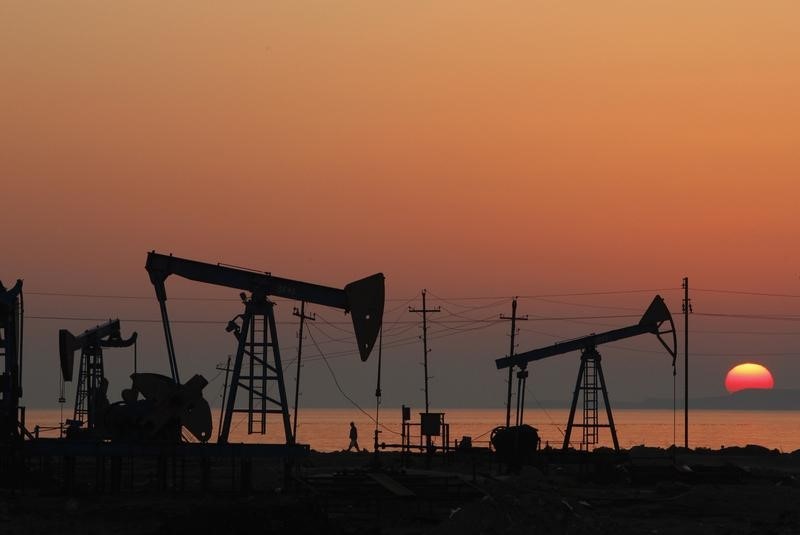By Peter Nurse
Investing.com -- Oil prices soared Tuesday as the cooler than expected U.S. inflation report raised hope of a soft landing for the U.S. economy, adding to various supply disruptions.
By 09:35 ET (14:35 GMT), U.S. crude futures traded 2.5% higher at $74.97 a barrel, while the Brent contract rose 2.4% to $79.87 a barrel.
Both benchmarks are continuing to rebound from last week when they hit their lowest levels since December 2021 on concerns that a possible global recession will hit oil demand.
Headline inflation in the U.S. fell by more than expected in November to its lowest level this year, with consumer prices rising 0.1% from October, up 7.1% from a year earlier.
Inflation has now fallen for five months in a row, suggesting price rises have peaked, allowing market participants to price in a lower trajectory for U.S. interest rates going forward. This should help the U.S. economy avoid a deep recession, boosting the demand for energy from the largest economy in the world.
Also boosting the crude market was the associated collapse in the U.S. dollar, with the dollar index slumping 1.4% to its lowest level since late June. Crude is denominated in dollars, thus weakness makes the commodity cheaper for foreign buyers.
The crude market had started the day on a positive note as the Keystone Pipeline, owned by TC Energy, remained closed after a leak last week, depriving the U.S. market of 620,000 barrels per day of Canadian crude.
The timing of when supply resumes is uncertain as TC Energy has yet to submit a restart plan needed to resume the operation of the Keystone pipeline.
The pipeline closure is likely to be reflected in the latest U.S. crude inventories, with the latest numbers from the industry body American Petroleum Institute due later Tuesday ahead of the official data from the Energy Information Administration on Wednesday.
Additionally, export volumes from Russia's Baltic and Black Sea ports are set to decline this month after the European Union ban and the G7 price cap came into operation earlier this month.
On the flip side, there is concern over Chinese demand after the country's leaders reportedly delayed a key economic policy meeting, in what appeared to be a bout of second thoughts about a rapid relaxation of the country's COVID-19 restrictions.
China scrapped some of its strict COVID curbs over the past week, boosting expectations of oil demand growth from the world's biggest crude importer, but infections have subsequently surged.
Traders will look towards the release of OPEC's monthly report later in the session, as it will contain new forecasts for global oil demand and supply.
